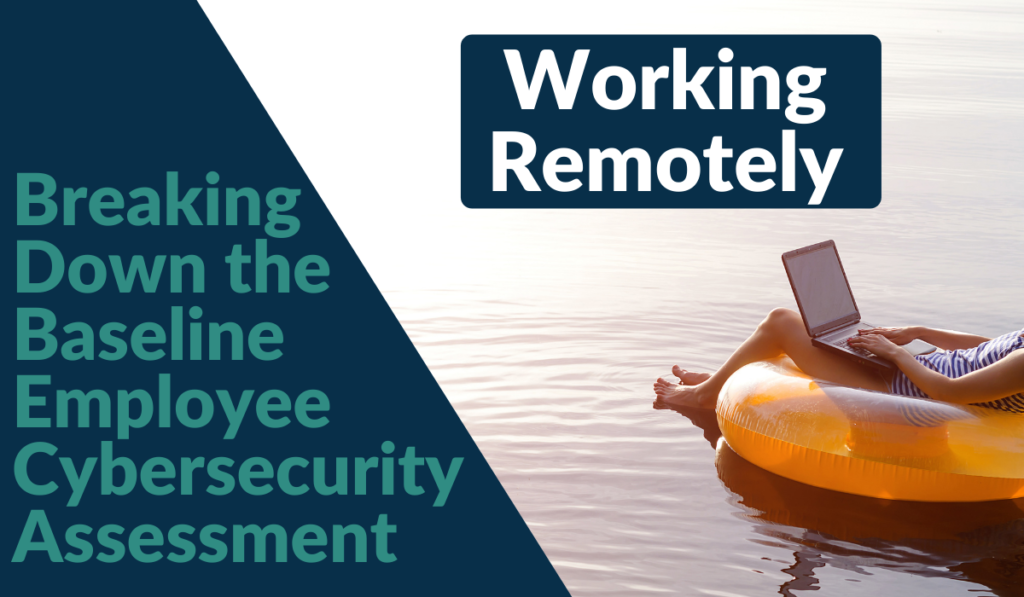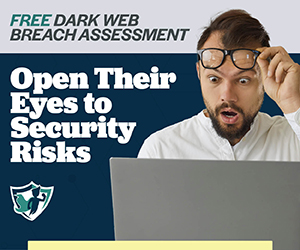
Our recent launch of the Baseline Employee Cybersecurity Assessment provides MSPs with a new tool to add to their prospecting and baseline risk detection efforts. As an MSP, it gives you the opportunity to show prospects and clients that human security plays a key role in protecting their organization and that without proper ongoing training, employees are an easy entry point for cybercriminals.
While a security risk assessment will identify gaps in a business environment, the human element should never be overlooked or assumed to be foolproof. Ongoing training is critical, but this assessment provides a deeper dive into which part of that human factor needs to be strengthened. The Baseline Employee Cybersecurity Assessment is delivered via a URL and is made up of a series of questions across six different cybersecurity categories, showing organizations where employees are struggling the most and maybe the most likely to fall victim to a malicious attempt made by cybercriminals.
In previous weeks, we looked closer at the other 5 sections of the assessment, including Social Media Habits, General Cybersecurity Knowledge, Personally Identifiable Information, Phishing, and Password Hygiene.
This week we’re focusing on the Working Remotely component of the assessment.
The remote workforce has had an unexpected boom these last couple of years. As we rushed to keep businesses running from our dining room tables, coffee shops, and home offices that were available to us in all sorts and setups, many let cybersecurity fall to the wayside. The panic to keep going meant that the rules of how to do a proper rollout for remote working were not adhered to, and we did what we could do to survive. This meant that new hardware and software was often deployed without being done in a structured and safe manner and as an MSP, you were left to support these ad hoc remote locations, each running independently of one another.
The one thing that you can control somewhat easily, is the training that each employee gets, and this includes reminding them of safe cybersecurity practices and behaviors regardless of where they’re working from. In this section, we address behaviors that include how an employee might react if they are aware of suspicious behavior from other colleagues, maintaining safe and protected access to the data that they have access to, and what risks may be present when working in public places.
The line between personal and private online behavior becomes even more blurred when working from home, as our guard is often let down when we work in the familiar environment of our homes. Knowing where an employee stands on how to handle cyberthreats and other risk factors in the remote work environment will help to mitigate these factors. Let’s keep the employees working safely while away in their remote offices, and the risk of cybercrime even further away.
How To Use the Results
After each employee completes their assessment, the results are recorded along with the overall time taken to complete the assessment. You are then given a report to share with client management that provides the average score across all employees who completed the assessment, as well as their individual scores. The report breaks down each of the six categories to show management where their employees are struggling the most. This new tool changes the way MSPs can show their prospects and clients their human security risks at baseline, helping to highlight the critical need for an ongoing security awareness training program to reduce those risks.
We’re excited to add the Baseline Employee Cybersecurity Assessment to our platform as another way for MSPs to expand and grow their businesses. This tool is now available for Breach Secure Now partners! If you’re a current partner and have questions on how to access this tool, or if you’re interested in learning more about how you can get your hands on this game-changer, you can contact us today! And, did we mention, it is INCLUDED with a Breach Secure Now partner subscription at no additional cost? Get started today!



Leave a Reply